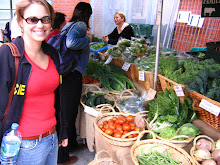 In India, almost all work (kam, in Hindi) is done collectively. Usually with a large group of family members in the case of the many families I’ve seen planting rice. Or with extended family or friends in the case of the local markets or repair shops. Or in the case of Navdanya, virtual strangers from all over the world who have become fast friends. It is strange, now, for me to see someone working alone, and makes me think about the work my mother did alone most of the time on our farm. And about the way we shared heavy jobs like wood cutting, butchering and haymaking with friends and neighbors.
In India, almost all work (kam, in Hindi) is done collectively. Usually with a large group of family members in the case of the many families I’ve seen planting rice. Or with extended family or friends in the case of the local markets or repair shops. Or in the case of Navdanya, virtual strangers from all over the world who have become fast friends. It is strange, now, for me to see someone working alone, and makes me think about the work my mother did alone most of the time on our farm. And about the way we shared heavy jobs like wood cutting, butchering and haymaking with friends and neighbors.The way work is organized at Navdanya is very random, and we volunteers generally just go out to some field and find what is being done and pitch in. This can make for some very interesting surprises, as I found out yesterday. I went out with Hannah to the fields behind the seed bank and found Sunil, the Rachels (there are three here right now) and Babaloo carrying cow dung into the vermicomposting shed. Hmmm.

Well, this is the work to be done, so we did it. The pile of cow dung had been sitting for about a month and was pretty ripe. Sunil and Rachel were carrying it with a makeshift “stretcher” made out of a burlap sack and two poles. Babaloo shoveled and two of us took turns carrying it into the shed and dumping it into rows. It very heavy, smelly work and it was quite hot, but there was a lot of light-hearted black humor about filling the “beds” in the “hospital” with the patients we were carrying on the “stretcher.” There was also some impromptu Hindi lessons with Sunil about taking the stretcher of cow poo AKA the patient to kamra number saat, che, panch, char…, (room number seven, six, five, four…).
Then came the even more fun part. When all the “patients” were arranged, with about five stretchers worth of cow dung, they are shaped, by hand, um yes… by bare hand… into neat heaps and then the worm filled “starter” is piled on top. Cow dung is actually thought to be antiseptic and sacred in Ayruvedic medicine, and is burned during weddings and other rituals. It is used to retard mold growth on the walls of rooms, including the one I am leaning against while writing this. So I stopped worrying and learned to love the cow hooie…on my hands, feet, pants, face... When we finished our smelly job, we covered the cow dung heaps with burlap sacks. The piles will then be watered weekly to keep the worms happy and hydrated. After 45 days the compost is finished and spread on the fields. And the process is started over again.

After our work the Rachels and I washed in a small stream, until Sunil beckoned us over to a shallow well filled with water, temporarily, for washing. Rachel from Spain stuck her foot in it, and from the look on her face, it was obviously divine. We all sat down on the edge and put our feet in the well and took a nice long post-cow dung soak in our makeshift spa. Amidst a lot of giggling and joking, Leeatt from Israel brought us chai while we soaked our feet like rural royalty having a country pedicure. Complete with cow dung. Not a bad way to spend a morning, really.

While soaking my feet, I reflected a bit on how an American farmer would do this heavy work. Alone, with a wheelbarrow and it would take five times as long. And feel five times longer too without the joking, laughing and learning. Not only was there about seven of us sharing this work, there was the work of the cows and the worms who start and finish the job to make the soil for the organic fields. Together , this community of beings all did their part to make hard work easy and exhausting work joyful, so that we can grow food in healthy, rich soil—the source of all life.

No comments:
Post a Comment